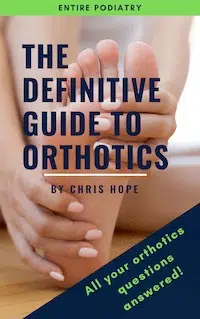What Are Shin Splints – Shin Strain, Shin Sprain?
Whether you are new to running or an experienced athlete, one of the most common overuse injuries you might face is shin splints.
Also known as medial tibial stress syndrome (MTSS) or sometimes referred to as shin sprain or shin strain, shin splints describes pain along the shin bone (tibia) that develops due to inflammation of the muscles, tendons, and bone tissue in the lower leg.
Up to 20% of runners experience shin splints, and they are estimated to account for around 60% of lower limb running-related injuries (Alharbi et al., 2022).
The condition is most common among new or returning runners who increase their mileage or intensity too quickly, but it can affect anyone who engages in repetitive impact activities such as running, jumping, or walking on hard surfaces.
Reference: Alharbi A. et al. (2022). “Medial Tibial Stress Syndrome (Shin Splint): Prevalence, Causes, Prevention, and Management in Saudi Arabia.” International Journal of Environmental Research and Public Health, 19(14):8672.
Why Runners Get Shin Splints
Shin pain when running occurs due to repeated stress on the tibia and surrounding tissues. Each step creates traction on the tibial periosteum, causing micro-trauma, inflammation, and sometimes small stress reactions in the bone.
Key contributors to shin splints include:
- Rapid training increases (distance, speed, or frequency)
- Running on hard or uneven surfaces
- Worn or unsupportive running shoes
- Flat feet or overpronation (rolling inwards)
- Tight calves or weak hip and core muscles
New runners often report shin pain during or after running, especially when running on treadmills or downhill, as these place more load on the anterior tibialis muscle (responsible for lifting the foot). Without recovery, this can lead to bone bruising, swelling, or even stress fractures.
Biomechanics and Shin Splints
The biomechanics of shin pain are complex, involving both muscular imbalance and loading mechanics.
Hyperpronation causes excessive inward foot roll, increasing traction from the tibialis posterior and soleus on the tibial border.
Forefoot striking or over-striding adds stress to the tibialis anterior, leading to anterior shin pain.
Weak triceps surae (gastrocnemius and soleus) or tight hip external rotators can also alter gait efficiency, increasing tibial load.
These imbalances can explain why some runners feel pain in the front of the shin, while others experience pain on the inside of the shin after running.
How to Prevent Shin Splints When Running
If you feel shin pain while running, stop and allow for recovery -continuing to “run through it” can worsen the condition.
Shin splint prevention strategies:
- Gradually increase mileage and intensity (no more than 10% per week)
- Replace running shoes every 700-900 km
- Alternate training surfaces to reduce repetitive impact
- Stretch and strengthen the calves, tibialis anterior, and glutes
- Use orthotics or footwear modifications if you have overpronation
- Warm up and cool down properly before and after every session
Treatment Options for Shin Splints
Most cases of shin pain from running improve with conservative care:
- Rest and ice to reduce inflammation
- Low-impact cross-training (cycling, swimming)
- Stretching and strengthening of the lower leg and hip muscles
- Shockwave therapy for chronic MTSS
- Custom orthotics or footwear advice to correct biomechanical causes
- Zebris gait analysis can also help identify contributing factors in your running technique
If ignored, shin splints can progress to more serious injuries such as tibial stress fractures or chronic exertional compartment syndrome, where pressure builds up in the leg muscles during exercise.
When to seek help for shin splints
You should see a podiatrist if you:
- Experience shin pain lasting longer than 2 weeks
- Have pain that worsens with every run or persists after rest
- Notice swelling, tenderness, or a focal spot of pain along the shin bone
A podiatrist can provide a biomechanical assessment, identify underlying causes, and recommend a personalised management plan that may include orthotics, footwear advice, and progressive loading exercises.
Shin splints management
Shin splints are common but manageable. Early assessment and treatment can prevent progression to more severe injuries.
If you are feeling pain in your shin when running, pain in the front of your shin, or shin pain after running, book an appointment at Entire Podiatry for a complete assessment, gait analysis, and tailored treatment plan.





